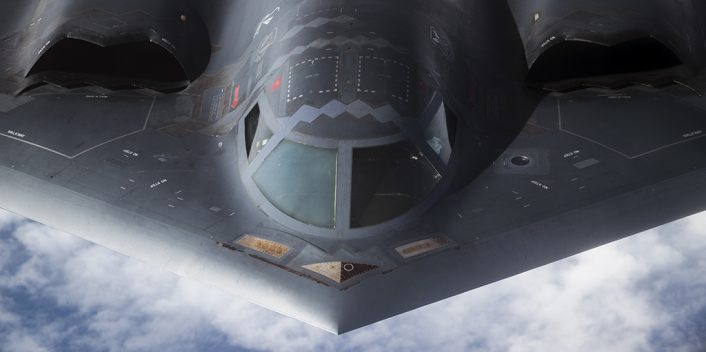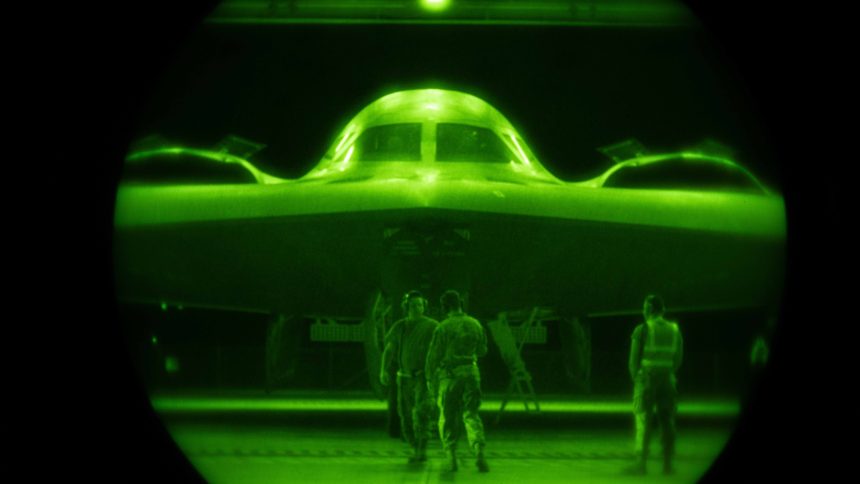First operational use of the B-2 Spirit bomber in Yemen.
On Oct. 17, 2024, U.S. Air Force B-2 Spirit stealth bombers were deployed for the first time in airstrikes against Houthi rebels in Yemen, a U.S. Department of Defense press release announced. On the orders of President Joe Biden, the U.S. military launched precision airstrikes targeting five underground weapons storage facilities in Houthi-controlled areas. These facilities housed various weapons components that the Houthis have previously used to carry out unlawful attacks on civilian and military vessels in the Red Sea, Bab Al-Mandeb Strait, and Gulf of Aden.
This marked the first operational use of the B-2 Spirit bomber in the ongoing conflict in Yemen. Known for its long-range stealth capabilities, the B-2 is capable of penetrating deeply fortified underground targets, a necessary advantage in targeting the Houthis’ hardened weapons storage locations. These facilities, designed to be impervious to conventional strikes, were specifically selected to showcase the U.S. military’s ability to eliminate even the most deeply buried assets.
At this time, it remains unclear where the B-2 stealth bombers launched from—whether it was their home base at Whiteman Air Force Base in Missouri (Continental U.S.) as it seems more likely, or from one of the B-2’s forward operating bases around the world. The type of weapons used by the B-2s is also unknown at the time of writing: it would be interesting to understand whether to target the “Houthi’s hardened underground facilities housing missiles, weapons components, and other munitions used to target military and civilian vessels throughout the region” the B-2 used the 30,000-pound GBU-57 Bunker Buster bombs.
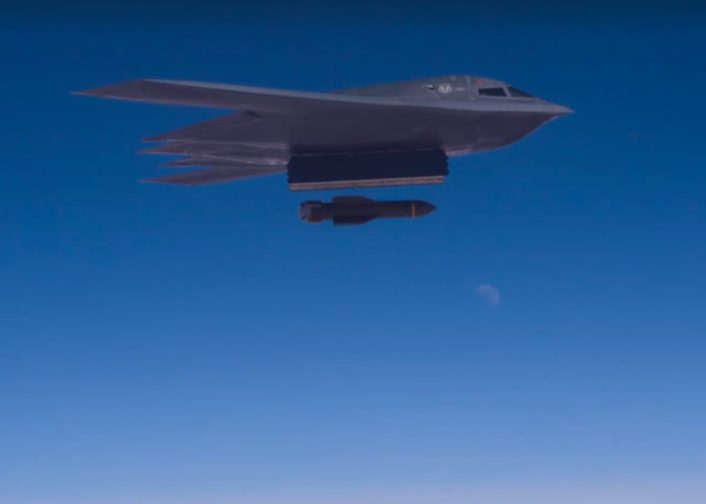
This is what we wrote about the GBU-57 MOP (Massive Ordnance Penetrator) in previous article:
The B-2 Spirit stealth bomber is the only aircraft in the U.S. Air Force inventory currently capable to operationally drop the massive 30,000-lb (14,000 kg) GBU-57 Massive Ordnance Penetrator (even though the testing of the MOP involved a B-52 back in 2009, the weapon’s intended platform is only the B-2).
The 14-ton GBU-57 is a 20-foot long GPS-guided bomb said to be able to penetrate 200 feet of concrete before exploding: for this reason it is considered the weapon of choice in case of attack on buried targets (such as the North Korean bunkers).
[…]
The MOP is sometimes mistaken with the 11-ton, parachute deployed, GBU-43B MOAB (Massive Ordnance Air Blast) also known as “Mother Of All Bombs”. The MOAB is the largest conventional air dropped weapon ever employed by the U.S. military: a U.S. Air Force Special Operations MC-130 Combat Talon II dropped the GBU-43B on an ISIS cave complex target in Afghanistan, for the very first time on Apr. 13, 2017.
Although it has not been officially integrated yet, there are some chances the B-2s might have employed the 5,000-pound GBU-72 Advanced 5K Penetrator.
The War Zone noted that one of the weapons potentially supported by the B-2’s SR1 software and hardware upgrades is the U.S. Air Force’s new 2,267 kg-class GBU-72/B bunker-buster bomb. This bomb combines the BLU-138/B – also called the Advanced 5,000 Pound Penetrator (A5K) – with a GPS-guided Joint Direct Attack Munition (JDAM) kit.
The GBU-72 was designed to address the challenge of striking deeply buried and fortified targets, offering greater lethality than older models such as the GBU-28. First tested with the F-15E Strike Eagle in 2021, the bomb was spotted again in March 2024 during tests on a B-1B Lancer bomber using external hardpoints.
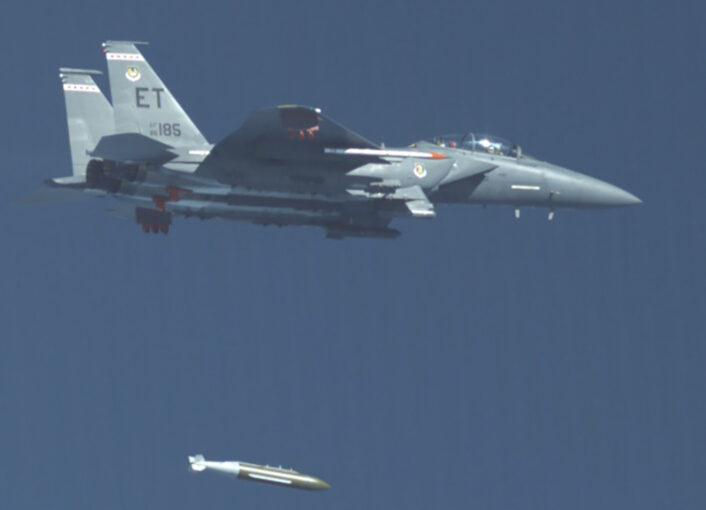
Notably, the B-2 mission was kept discreet, as it was not revealed on social media, by aviation enthusiasts using flight tracking apps or monitoring radio communications, as happened in the past.
Secretary of Defense Lloyd J. Austin III emphasized the significance of this operation, stating, “The employment of U.S. Air Force B-2 Spirit long-range stealth bombers demonstrates U.S. global strike capabilities to take action against these targets when necessary, anytime, anywhere.” This strike is a powerful message to adversaries, reinforcing the U.S.’s commitment to neutralizing threats to international security and free maritime navigation.
For over a year, the Iran-backed Houthi rebels, designated as Specially Designated Global Terrorists, have engaged in destabilizing activities in the region, including attacks on international shipping lanes and U.S. vessels. These actions have disrupted the free flow of commerce and endangered civilian and military personnel. The recent airstrikes aim to degrade the Houthis’ capability to continue their attacks and protect U.S. forces and international allies operating in one of the world’s most critical waterways.
The decision to authorize the strikes comes after continued provocations by the Houthis and their repeated defiance of international law. The U.S. government has been clear that further destabilizing actions by the Houthis will be met with swift and decisive consequences. Austin praised the professionalism of the U.S. troops involved, highlighting their skill and commitment to defending American interests in the region.
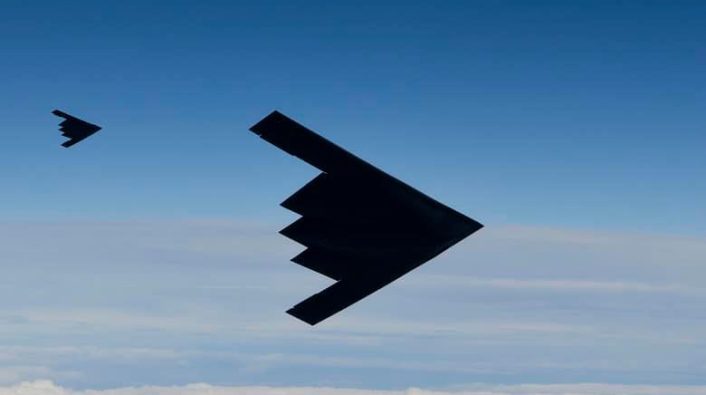
The use of the B-2 Spirit bombers in this mission underscores the evolving nature of U.S. military strategy in Yemen and highlights the importance of advanced technologies in modern warfare. As the situation in Yemen continues to evolve, the U.S. remains committed to defending its interests and ensuring the security of key international trade routes.
The air strike sends also a clear message to Iran amid growing regional tensions.
“Again, the United States will not hesitate to take action to defend American lives and assets; to deter attacks against civilians and our regional partners; and to protect freedom of navigation and increase the safety and security in these waterways for U.S., coalition, and merchant vessels. We will continue to make clear to the Houthis that there will be consequences for their illegal and reckless attacks. I am grateful for the professionalism and skill of the brave American troops who took part in today’s actions and who continue to stand guard in defense of our Nation.”
